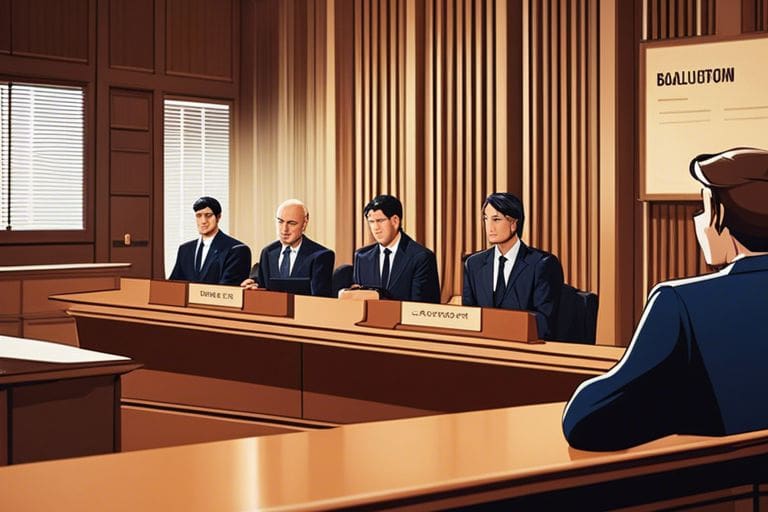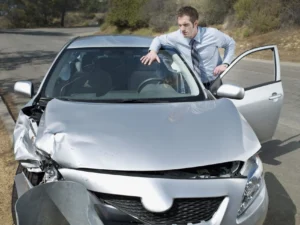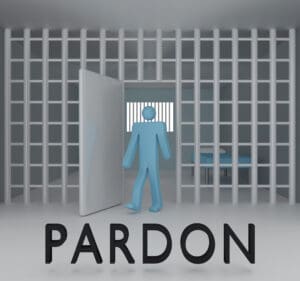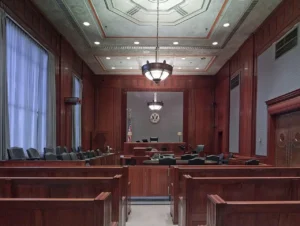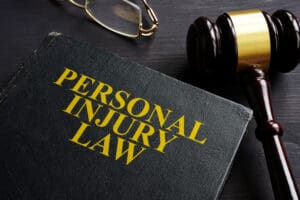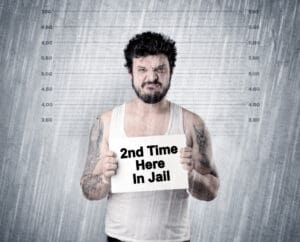It’s crucial for law enforcement professionals and legal experts to understand the rights and procedures associated with ballistics evidence. This informative post will examine into the legal aspects of handling ballistics evidence, highlighting important rights of individuals, proper procedures to follow, and the authority involved in collecting and analyzing such crucial forensic information. Whether you’re a seasoned professional or a student in the field, knowing the legal framework surrounding ballistics evidence is paramount in ensuring justice is served.
Legal Framework
Admissibility of Ballistics Evidence
One of the crucial aspects of ballistics evidence is its admissibility in court. Legal professionals must ensure that the evidence meets the necessary standards to be considered reliable and relevant to the case. Courts require that ballistics evidence, like all forensic evidence, adhere to strict standards of scientific validity and reliability. The methodologies used must be widely accepted in the forensic community, and the evidence must be presented by qualified experts. Ensuring the proper collection, handling, and analysis of ballistics evidence is critical to maintaining its admissibility.
Moreover, the process of establishing the admissibility of ballistics evidence often involves pre-trial hearings where the defense can challenge the validity and reliability of the evidence presented. This is where the role of expert witnesses becomes crucial, as they provide testimony on the scientific principles underlying the evidence. Understanding these legal nuances helps ensure that only credible evidence is admitted, thereby upholding the integrity of the judicial process.
Chain of Custody and Handling Procedures
Procedures for maintaining the chain of custody and handling of ballistics evidence are crucial to prevent contamination or tampering. This ensures the integrity of the evidence and its admissibility in court. A strict chain of custody is crucial in documenting the handling of evidence from the moment it is collected to its presentation in court. Proper procedures should include detailed records of who handled the evidence and when, as well as measures to preserve its integrity.
Maintaining an unbroken chain of custody involves meticulous documentation at every stage of evidence handling. Any gaps or irregularities in this documentation can cast doubt on the integrity of the evidence, potentially leading to its exclusion. Law enforcement agencies and forensic laboratories must implement robust protocols to manage and track evidence to avoid any allegations of mishandling or contamination.
Rights of the Accused
Protection Against Self-Incrimination
Even in the face of compelling ballistics evidence, individuals have the right to protect themselves against self-incrimination. This means that they cannot be forced to provide evidence or testimony that may be used against them in a court of law. The Fifth Amendment of the U.S. Constitution provides this protection, ensuring that individuals are not compelled to incriminate themselves during legal proceedings.
This right is particularly significant in cases involving forensic evidence, as defendants may face pressure to explain or refute the evidence presented against them. Legal counsel plays a vital role in advising clients on how to navigate these situations without compromising their rights. Ensuring that defendants are fully aware of their rights helps maintain the fairness and integrity of the legal process.
Right to Counsel and Expert Assistance
Any individual facing allegations involving ballistics evidence is entitled to legal counsel and expert assistance. This right ensures that the accused have access to professional representation to navigate the complexities of the legal system and to challenge the ballistics evidence presented against them. Assistance from experts in the field of ballistics can be crucial in examining and disputing the accuracy and interpretation of the evidence. This right is vital in ensuring a fair trial and upholding the principles of justice.
Having access to expert witnesses can significantly impact the outcome of a case. These experts can provide alternative interpretations of the evidence, identify potential flaws in the prosecution’s case, and offer insights that may not be apparent to those without specialized knowledge. The collaboration between legal counsel and forensic experts is essential in building a robust defense strategy.
Procedures for Collecting and Analyzing Evidence
Crime Scene Investigation and Evidence Collection
One fundamental aspect of ballistics evidence is the proper handling of crime scenes and the collection of evidence. This crucial step ensures the integrity and admissibility of the evidence in court. Crime scene investigators must follow stringent protocols to avoid contamination and ensure that all relevant evidence is collected and preserved correctly. This involves using appropriate techniques for documenting, collecting, and packaging evidence to maintain its integrity throughout the investigation process.
The initial steps taken at a crime scene can significantly impact the quality and reliability of the evidence collected. Detailed documentation, including photographs and sketches, helps recreate the crime scene for later analysis and court presentations. Ensuring that all evidence is collected systematically and stored properly helps maintain the chain of custody and supports the admissibility of the evidence in court.
Laboratory Analysis and Quality Control
Crime laboratories play a vital role in analyzing ballistics evidence to determine firearm types, ammunition used, and trajectories. Quality control measures such as proficiency testing, equipment calibration, and peer review are crucial to ensure accurate results. Firearms examiners undergo rigorous training to effectively analyze ballistics evidence and provide expert testimony in court. Their findings can have a significant impact on criminal investigations and judicial outcomes.
Laboratory procedures must adhere to high standards of accuracy and reliability to ensure that the evidence withstands scrutiny in court. Regular quality control checks, ongoing training for examiners, and adherence to established protocols are essential in maintaining the credibility of the forensic analysis. These measures help prevent errors and ensure that the evidence presented is scientifically sound.
Challenges and Limitations
Contamination and Tampering Risks
All ballistics evidence is susceptible to contamination and tampering risks. With the potential for mishandling or intentional interference, the integrity of the evidence can be compromised, leading to wrongful conclusions and misjudgments. Ensuring that strict protocols are followed at every stage of evidence handling is essential to prevent these risks. Training law enforcement and forensic personnel on best practices for evidence management is crucial in maintaining the reliability of the evidence.
Contamination can occur at any point from the crime scene to the courtroom, making it imperative to implement stringent controls and continuous monitoring. Regular audits and reviews of evidence handling procedures can help identify and address any vulnerabilities in the process. By minimizing the risks of contamination and tampering, the legal system can ensure that the evidence presented in court is reliable and accurate.
Interpretation and Presentation of Results
On the surface, interpreting and presenting ballistics evidence results may seem straightforward, but there are intricacies that must be carefully considered. Risks of misinterpretation or misrepresentation can have severe consequences, impacting the outcome of legal proceedings and the search for truth in criminal investigations. Forensic experts must ensure that their findings are communicated clearly and accurately, avoiding technical jargon that may confuse jurors or legal professionals.
Effective communication of forensic findings is crucial in helping the court understand the evidence’s significance. Experts must be prepared to explain complex scientific concepts in a manner that is accessible to all participants in the legal process. This includes providing clear visual aids, detailed reports, and concise testimony that accurately conveys the evidence’s implications.
Summing up
On the whole, the legal aspects of ballistics evidence underscore the importance of rights and procedures in handling forensic evidence. Understanding the proper protocols and regulations surrounding ballistics evidence is crucial for law enforcement professionals and legal experts in ensuring the integrity and admissibility of evidence in court. By following established procedures and respecting individual rights, the criminal justice system can effectively utilize ballistics evidence to facilitate justice and maintain public trust.
FAQ
Q: What is the significance of ballistics evidence in legal proceedings?
A: Ballistics evidence plays a critical role in criminal investigations and legal proceedings by helping to link firearms to crimes, identify suspects, and reconstruct crime scenes.
Q: What are the rights of individuals regarding the use of ballistics evidence in court?
A: Individuals have the right to challenge the admissibility and accuracy of ballistics evidence presented against them in court. They can request expert opinions and cross-examine the prosecution’s ballistics experts.
Q: What are the procedures for collecting and handling ballistics evidence in a criminal investigation?
A: The procedures for collecting and handling ballistics evidence involve documenting the chain of custody, analyzing firearms and ammunition, conducting test firings, comparing tool marks, and documenting findings in a detailed report for use in court.
Type of Attorney for Ballistics Evidence Cases
A criminal defense attorney specializing in forensic evidence is essential when navigating cases involving ballistics evidence. These attorneys possess the expertise to understand and challenge forensic evidence, ensuring that clients receive a fair trial.
Expertise in Forensic Evidence A criminal defense attorney with a focus on forensic evidence has a deep understanding of the scientific principles and methodologies used in ballistics analysis. They are well-versed in scrutinizing the collection, preservation, and interpretation of ballistic evidence, ensuring that it meets the required legal standards. This expertise is crucial in identifying any flaws or inconsistencies in the evidence presented by the prosecution. By leveraging their knowledge, they can provide a robust defense for their clients.
Legal Advocacy and Protection Navigating the legal complexities of ballistics evidence requires robust legal advocacy. A specialized criminal defense attorney protects the rights of the accused by challenging the admissibility and reliability of forensic evidence. They provide comprehensive legal protection by preparing strong defense strategies, cross-examining expert witnesses, and presenting alternative interpretations of the evidence to create reasonable doubt. Their role is crucial in ensuring that the accused’s rights are upheld throughout the legal proceedings.
Guiding Through the Legal Process From pre-trial motions to the trial itself, a criminal defense attorney guides their clients through every step of the legal process involving ballistics evidence. They ensure that the client’s rights are upheld, and that all legal procedures are followed correctly. Their guidance is instrumental in preparing the case, filing necessary legal documents, and advocating for the client during trial. By providing expert legal representation, they help clients navigate the complexities of the legal system and work towards achieving a favorable outcome.

